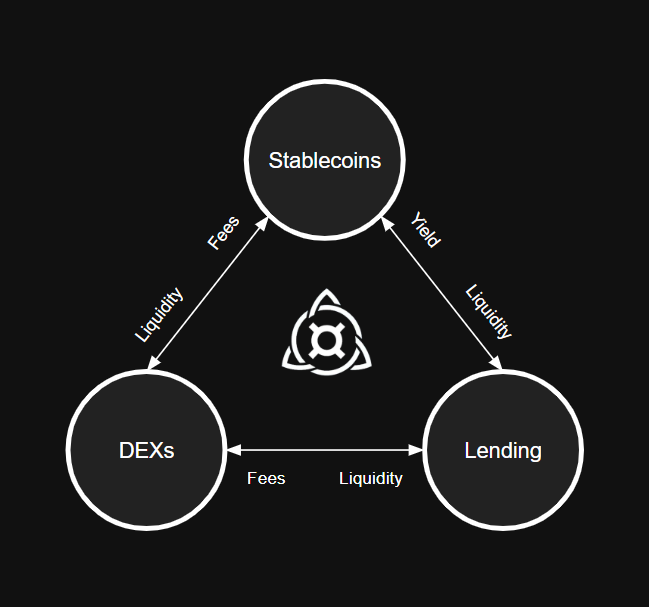What is the DeFi Trinity?

The "DeFi Trinity" framework—pioneered by Sam Kazemian and successfully implemented by Frax Finance—provides a blueprint for building scalable DeFi ecosystems with three key primitives: stablecoins, decentralized exchanges (DEXs), and lending protocols.
This vertically integrated framework can also be expanded horizontally across multiple blockchains, enhancing interoperability with native dApps and assets on different networks.

“There’ is no difference between currency, liquidity, and lending. They’re all different parts of the same thing. That’s what the DeFi Trinity ultimately is.” ~Sam Kazemian, Frax’s Co-founder.
1. Stablecoins - The Unit of Account
Stablecoins have become a foundational cornerstone in DeFi, providing users with a non-volatile, on-chain medium for value storage, payment/settlement, liquidity, credit, and yield generation. As of Q2 ‘25, the US Dollar is both the world’s dominant reserve currency and largest stablecoin denomination, with more than $200 billion in circulating supply—over 95% of the total stablecoin market. Supporting and/or offering USD-pegged stablecoins is, therefore, essential for most DeFi projects to grow adoption and TVL (total value locked).
2. Decentralized Exchanges - The Liquidity Layer
DEXs enable digital asset trading through on-chain mechanisms, such as permissionless liquidity pools powered by AMMs (automated market makers). These pools can pair various tokens with stablecoins to facilitate low-slippage swaps and price discovery. Liquidity providers (LPs) who supply their assets to DEX pools can earn swap fees plus other incentives, in return. DEXs also play an important role in facilitating collateral liquidation for DeFi protocols, enabling composability and liquidity for advanced market operations.
3. Lending Protocols - The Credit Layer
Lending protocols are decentralized money markets where borrowers can obtain loans, often in stablecoins, against their digital assets. These protocols connect lenders who seek interest earnings with borrowers seeking liquidity or leverage. This creates dynamic and trustless credit markets secured by on-chain collateral, enabling more capital efficiency and yield opportunities.
Like banks in TradFi, lending protocols also produce a money multiplier effect in DeFi from recursive lending—where borrowed funds naturally re-enter money markets—amplifying both economic growth and the total money supply through on-chain credit expansion.
Learn more about Frax’s DeFi Trinity framework.
